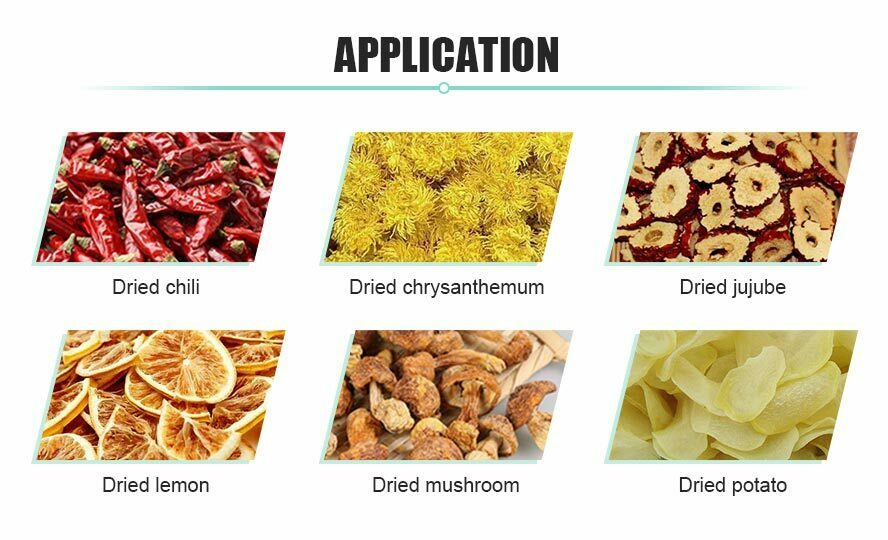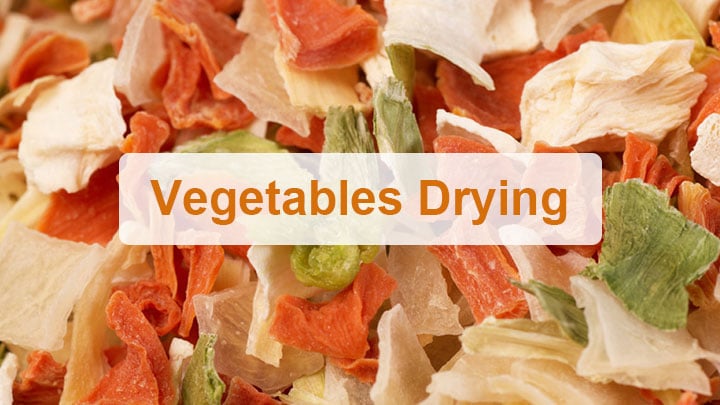
Dehydrated vegetables are made by drying fresh vegetables to remove most of the moisture content. The dehydrated vegetables can basically maintain the original color and nutrients. Compared with fresh vegetables, dehydrated vegetables have the advantages of small size, lightweight, and convenient transportation. Moreover, the dehydrated vegetables can be restored by immersing them in clean water when eating, and the original color, nutrition, and flavor of the vegetables can be retained. In the vegetable peak season, surplus vegetables can be processed into dehydrated vegetables, which are easy to store and transport.
What is the nutritional value of dried vegetables?
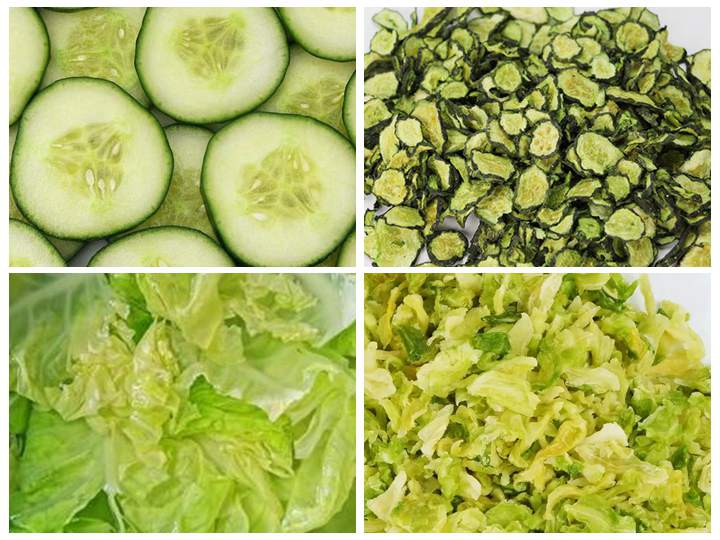
Vegetables are one of the essential foods in people’s daily diet. They can provide nutrients such as a variety of vitamins and minerals necessary for the human body. So do the dehydrated vegetables still have nutritional value? The answer is yes. In order to supplement nutrients in space, the vegetables that the astronauts eat are actually dehydrated vegetables. During the drying process of vegetables, only a small part of the water-soluble nutrients are lost. When most of the water in vegetables is evaporated, the nutrients will be relatively greatly concentrated. When we eat dehydrated vegetables, the nutrients we absorb may be more than fresh vegetables. And some vegetables like seaweed will be even more delicious after being dried. With the continuous development of technology, dehydrated vegetables have been able to retain most of the original nutrients of vegetables.
Why choose our vegetable drying equipment?
野菜と果物は水分を多く含んでおり、乾燥過程では低温で乾燥して乾燥させる必要があります。高温では栄養価が失われ、乾燥後の果物・野菜の色や形にも影響します。市場に出回る乾燥野菜は主にAD野菜とFD野菜に分けられます。AD野菜は熱風、マイクロ波、膨化などにより乾燥させ、水分は主に蒸発として排出されます。FD野菜は真空凍結乾燥により乾燥させ、水分は直接昇華として排出されます。FD野菜は風味が良く栄養価が高いですが、収量は低く、機械は非常に高価です。現在、市場に出回る多くの乾燥野菜は熱風乾燥で処理されています。
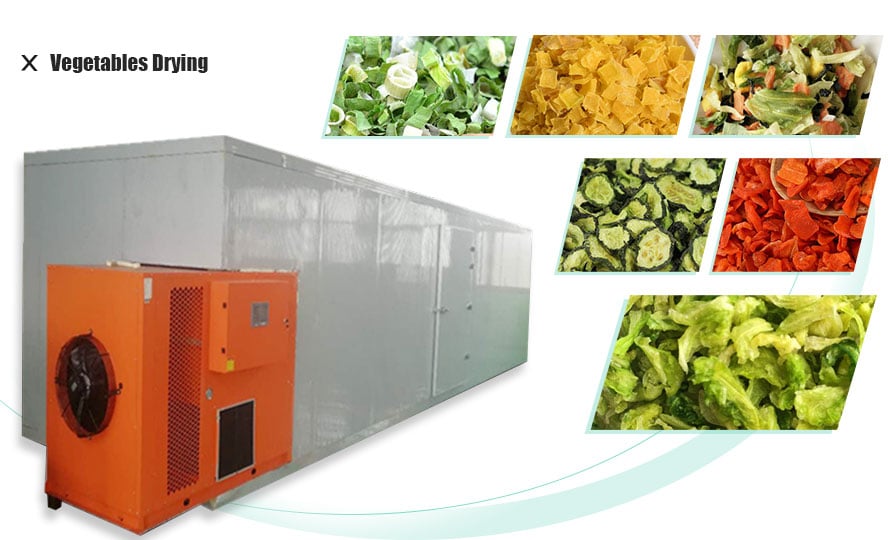
従来の乾燥野菜の作り方は主に空気乾燥、日干し乾燥などを使用しています。これらの方法には、熱効率の低さ、自動化の低さ、環境影響を受けやすいといった多くの欠点があります。私たちの空気エネルギー熱ポンプ野菜乾燥機は、周囲環境から大量の熱を吸収して被乾燥物へ転送するため、少量の電力で運用できます。エネルギー消費が少なく、エネルギー変換率が高いです。
The process of vegetable drying
- Selection of raw materials: Choose vegetable varieties with rich meat quality. Before dehydration, you should strictly select the best and remove the inferior, and remove the pests, rot, and shriveled parts. Vegetables should be at 80% maturity, and those that are overripe or underripe should also be selected. After vegetables are rinsed with clean water, then placed in a cool place to dry, but should not be exposed to the sun.
- Cutting and blanching: Cleaned raw materialsを、製品要件に応じて、薄片、糸状、帯状などの形に切る。 blanching時は原料により温度が異なる。水温は通常150℃以上で、一般的な blanching 時間は2〜4分。葉茎野菜は blanching を避けた方が良い。
- Cooling and draining: Blanched vegetables should be immediately cooled (usually rinsed with cold water) to quickly drop to room temperature. After cooling, the water could be drained by the vibrating water separator to shorten the drying time. Then spread the vegetables out and cooled for a while to prepare for drying.
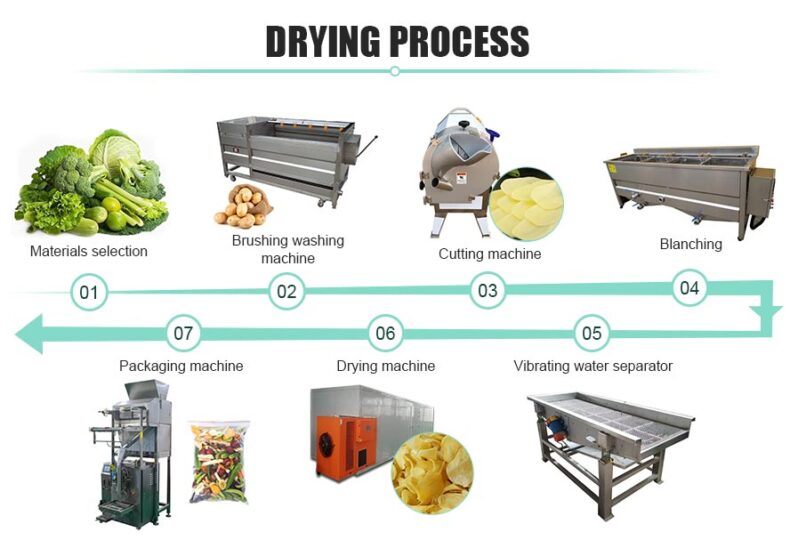
- 乾燥: 乾燥中は、異なる野菜の品種に応じて異なる温度、時間、色、含水量を決定するべきです。乾燥には空気源熱泵乾燥機を使用するのが良いです。空気エネルギーの加熱はゆっくりと上昇し、野菜の元の組織繊維と栄養素の維持を最大化できます。野菜を材料トレイに入れ、材料トレイを材料トラックに挿入し、乾燥室へ押し込み、密閉扉を閉め、乾燥生産を開始します。 空気エネルギー熱ポンプ乾燥プロセスでは、野菜が空気と接触すると、空気エネルギーから大量の熱が吸収されます。一部は野菜の内部温度を上げるために、他の部分は野菜内部の水分の移動と蒸発のために使用されます。空気が連続的に熱を野菜へ伝え、連続乾燥の過程で野菜の水分を蒸発させ続けるプロセスです。このプロセスは三つの段階に分かれます:加熱段、定速乾燥段、減速乾燥段。
- Storage stage: After the drying is finished, don’t pack it immediately. It is best to wait until the vegetables have completely cooled down and consistent with the room temperature before starting to pack. The packed dried vegetables should be placed in a dry and cool place.
野菜乾燥機の用途
Our vegetable drying machine is also suitable for fruits, fungi, Chinese medicinal materials, seafood, crops, and some chemical products. It also can be customized according to the user’s demands for different products.
